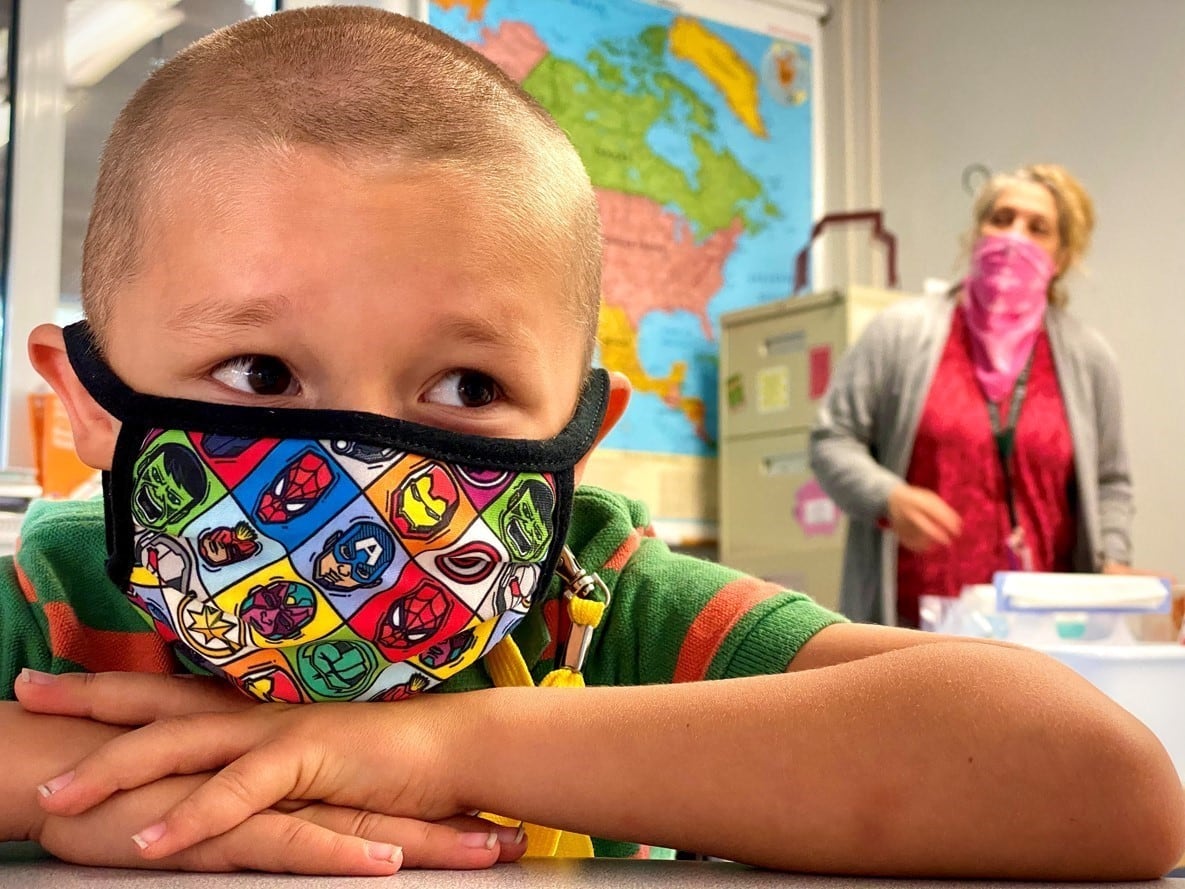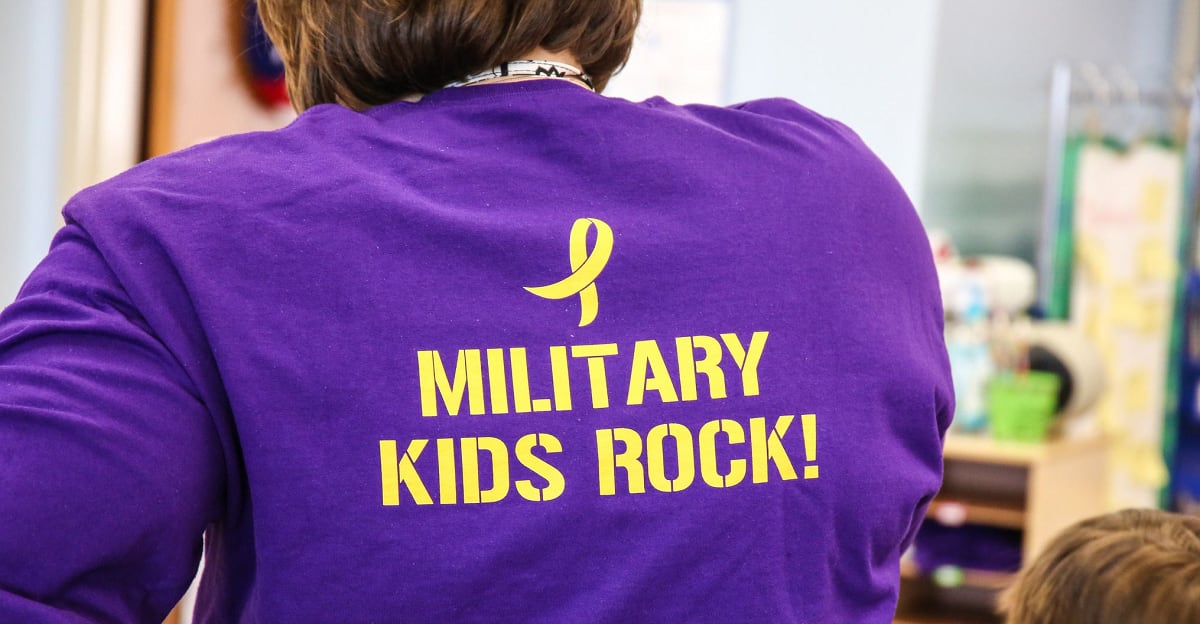Students in Department of Defense schools have achieved among the highest scores in the nation for fourth- and eighth-grade reading and math, according to government auditors.
Students with disabilities and Black and Hispanic students also scored consistently higher than their peers, according to the analysis conducted by the Government Accountability Office.
Overall, fourth-grade students in DoDEA schools scored higher in math than their peers in 98% of the states. The DoDEA eighth-graders scored higher in math than students in 94% of the states, according to scores from 2019, the most recent available. Students’ scores were either at the top of the charts or in second place, compared with scores of students in other states and jurisdictions who took the 2019 National Assessment of Educational Progress math and reading components. Reading scores of DoDEA fourth-graders and eighth-graders overall were higher than every other state.
The National Assessment of Educational Progress is the only standardized collection of tests that allows for comparisons of public school students nationwide. The NAEP is generally given every two years in various subjects to samplings of fourth-graders, eighth-graders and 12th-graders. In 2021, NAEP was postponed due to COVID-19.
Since the National Center for Education Statistics agency doesn’t report 12th-grade results at the state level, GAO auditors couldn’t include 12th-grade results. Auditors analyzed data from 2011, 2013, 2015, 2017 and 2019.
The GAO study was required by the fiscal 2021 National Defense Authorization Act. Auditors, who consulted with Department of Education officials knowledgeable about the data, were charged with comparing educational outcomes of DoDEA students with those of their peers in public schools.
DoDEA students’ rankings have improved dramatically since 2011, especially in math. That year, just 37% of states had lower scores in reading than the fourth-grade DoDEA population, compared to 98% of states having lower scores in 2019; just 57% of states had lower scores in eighth-grade math in 2011, compared to 94% in 2019.
Minority students have also improved using that benchmark. In 2011. for example, 37% of states had lower scores in fourth-grade math for Black students than DoDEA; compared to 96% in 2019. For eighth-grade math, 73% of states had lower scores for Black students than DoDEA in 2011, compared to 96% of states in 2019.
Not all students take the NAEP. In most cases, it’s a representative sample of students in U.S. schools. But in DoDEA schools, all the students in the designated grades take the test that particular year.
DoDEA operates 160 schools for pre-kindergarten through 12th-grade students living on military installations in 11 foreign countries, seven states, Guam and Puerto Rico. About 64,000 children of military and DoD civilians attend these schools.
Pandemic challenges
While COVID-19 has disrupted education in so many ways, DoDEA students didn’t experience the drops in test scores in end-of-year assessments in 2021, compared to pre-COVID, that many of their counterparts did in schools across the U.S., DoDEA officials said. They note that the 22 states who reported achievement in 2020-2021 showed substantial drops, especially among students that are low income, English language learners, Black, Latino or receiving special education services.
Among DoDEA students, some groups saw slight increases in results for English language arts/literacy in school year 2020-2021, while most maintained steady achievement from school year 2018-2019, DoDEA officials said. The end-of-year tests weren’t administered to DoDEA students in the spring of 2020 because of the pandemic.
Students held steady in math, with some slight gains among all students with disabilities and in sixth-grade math. There were significant increases in geometry (6%) and algebra 2 (7%), compared to that previous assessment cycle. About 95% of DoDEA students participated in the end-of-year assessments in the spring of 2021; their performance remained steady, exceeding expectations.
RELATED

DoDEA officials have implemented extensive safety and cleaning protocols in an effort to keep students learning in-person in their classrooms since the fall of 2020.
Just like other organizations and installations around the world, DoDEA has seen an increase in COVID-19 cases following the holiday period, said DoDEA spokesman Will Griffin. As of Jan. 14, there were about 1,000 student cases, less than 1.5% of the student population, and just over 300 employee cases, or about 2.5% of the population, he said.
As of Jan. 14, there were three schools operating remotely, in Bahrain and in Ankara, Turkey, Griffin said. Three schools on Fort Bragg, North Carolina, moved to remote learning temporarily starting Jan. 18 following an increase in COVID-19 cases, he said.
The situation is fluid, like it is with many schools in the U.S. and around the world. DoDEA officials work closely with installation commanders and military public health officials who are monitoring local conditions. When the Health Protection Conditions or local conditions don’t allow for in-person learning, they have steps in place to temporarily transition to remote learning as needed.
About 95% of DoDEA employees have been vaccinated, and officials are processing about 500 exemption requests, Griffin said. To date, no employees have been fired because of lack of vaccination, he said
Karen has covered military families, quality of life and consumer issues for Military Times for more than 30 years, and is co-author of a chapter on media coverage of military families in the book "A Battle Plan for Supporting Military Families." She previously worked for newspapers in Guam, Norfolk, Jacksonville, Fla., and Athens, Ga.





